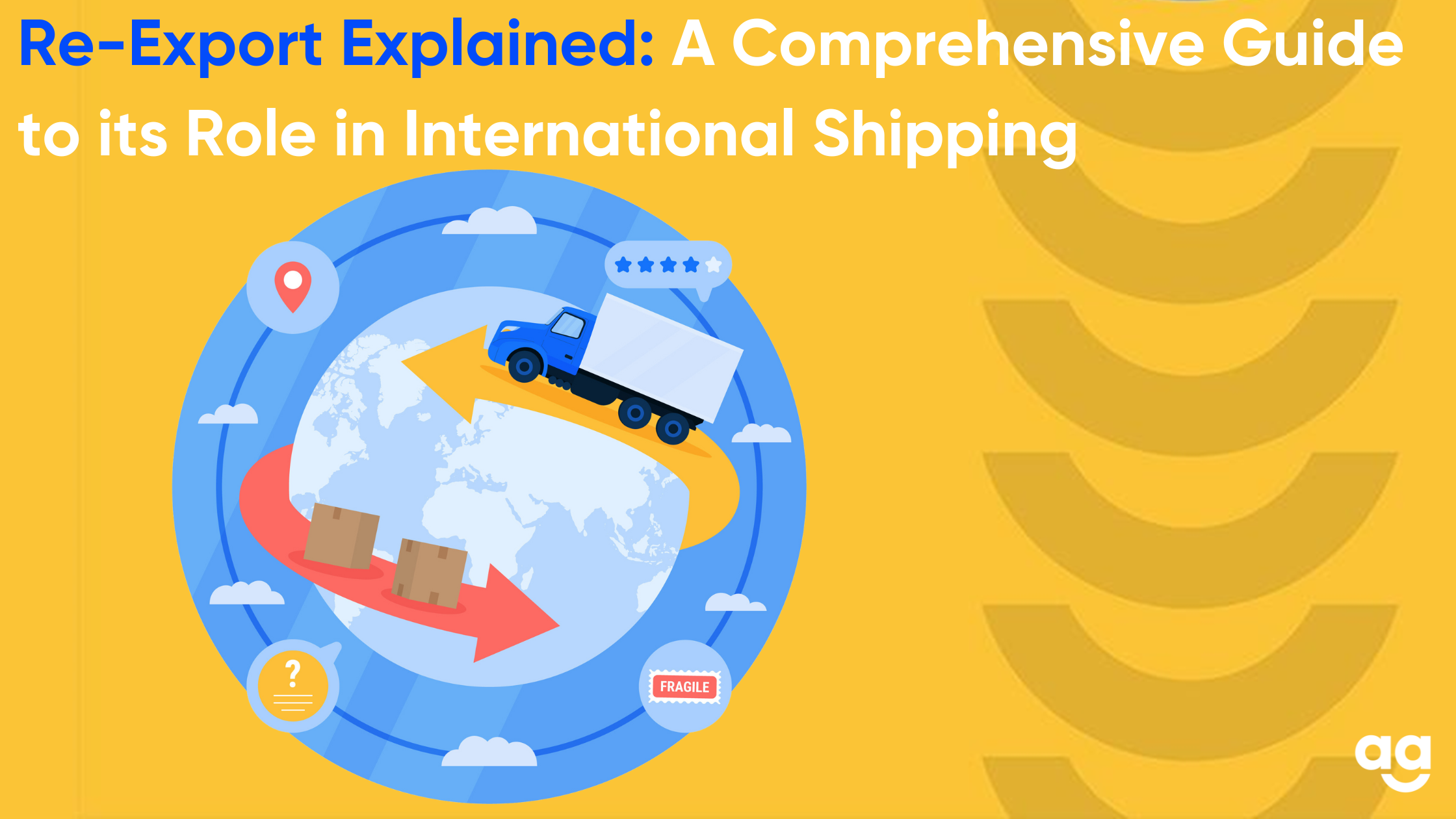Introduction
In the world of international trade and shipping, the concept of re-export plays a significant role in facilitating global commerce. Re-export refers to the process of exporting goods from one country to another without the goods undergoing any significant alteration or transformation in the country of transit.
This blog post aims to provide a comprehensive guide to re-export, its importance in international shipping, and the key considerations involved.
Understanding Re-Export in International Shipping
Definition and Concept
Re-export involves the movement of goods across national borders without the goods being consumed or modified in the country of transit. The goods are simply shipped from the exporting country to a third country, either directly or via a transit country, where they are ultimately consumed or further processed.
Re-export enables businesses to take advantage of favorable trade conditions, access new markets, or leverage logistical advantages offered by certain transit countries.
Distinction from Import and Export
Re-export differs from the traditional import and export processes. In import-export transactions, goods are typically produced or manufactured in one country and then sold or distributed in another country.
In contrast, re-export involves the movement of goods through a third country without substantial processing or modification. Re-export is often used to take advantage of preferential trade agreements, avoid trade barriers, or optimize supply chain logistics.
The Importance of Re-Export in International Trade
Expanding Market Access
Re-export allows businesses to reach new markets and expand their customer base by leveraging favorable trade conditions. By taking advantage of trade agreements and preferential tariff rates, companies can access markets that may otherwise be challenging to enter due to trade barriers or high import duties.
Re-export provides an opportunity for businesses to tap into the demand of specific regions or countries without the need for local production or manufacturing facilities.
Optimizing Supply Chain Efficiency
Re-export can play a vital role in optimizing supply chain efficiency. By strategically utilizing transit countries that offer favorable logistical advantages, businesses can streamline their shipping routes and reduce transportation costs.
Re-export allows companies to consolidate shipments, take advantage of efficient transportation hubs, and reduce transit times. This optimization of the supply chain contributes to improved operational efficiency and cost savings.
Key Considerations for Re-Export
Compliance with Trade Regulations
When engaging in re-export, businesses must comply with international trade regulations and customs requirements. It is crucial to understand the legal framework, documentation procedures, and restrictions imposed by both the exporting and transit countries.
Compliance with export controls, trade embargoes, and licensing requirements is essential to avoid legal consequences and ensure smooth and lawful re-export operations.
Documentation and Record-Keeping
Accurate and complete documentation is vital for re-export transactions.
Businesses must maintain proper records of the goods being re-exported, including invoices, packing lists, export licenses, and other relevant documents. This documentation is necessary to demonstrate the origin and nature of the goods, comply with customs procedures, and facilitate the smooth movement of goods across borders.
Benefits and Challenges of Re-Export
- Benefits of Re-Export
- Access to new markets without establishing local manufacturing or production facilities.
- Utilization of preferential trade agreements and tariff benefits.
- Optimization of supply chain logistics and reduction of transportation costs.
- Opportunity to source goods from different countries to meet specific customer requirements.
- Increased flexibility in responding to changing market demands.
- Challenges of Re-Export
- Compliance with complex trade regulations and customs requirements.
- Proper documentation and record-keeping.
- Identification of reliable transit countries and logistics providers.
- Risk management related to potential disruptions, delays, or loss of goods during transit.
- Potential trade barriers or restrictions imposed by transit or destination countries.
Examples of Re-Export in Practice
Re-Exporting Electronics
A company based in Country A imports electronics goods from Country X. The company then ships these goods to Country Y without any substantial processing. Country Y offers preferential tariff rates for these electronics products, allowing the company to take advantage of cost savings and expand its market reach.
Re-Exporting Agricultural Products
A food trading company in Country A sources agricultural products, such as fruits or coffee, from multiple countries. The company consolidates these products in a transit country and re-exports them to various destination countries. This allows the company to leverage trade agreements and access multiple markets efficiently.
Conclusion
Re-export plays a crucial role in international shipping by enabling businesses to expand market access, optimize supply chain efficiency, and leverage trade advantages.
Understanding the concept of re-export, complying with trade regulations, maintaining accurate documentation, and addressing the challenges involved are essential for successful re-export operations.
By strategically utilizing re-export opportunities, businesses can unlock new markets, enhance their competitiveness, and maximize the efficiency of their international trade endeavors.







 Shipping
Shipping







